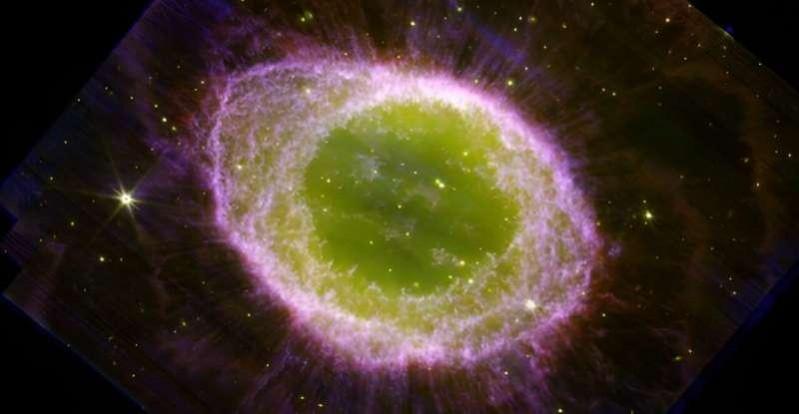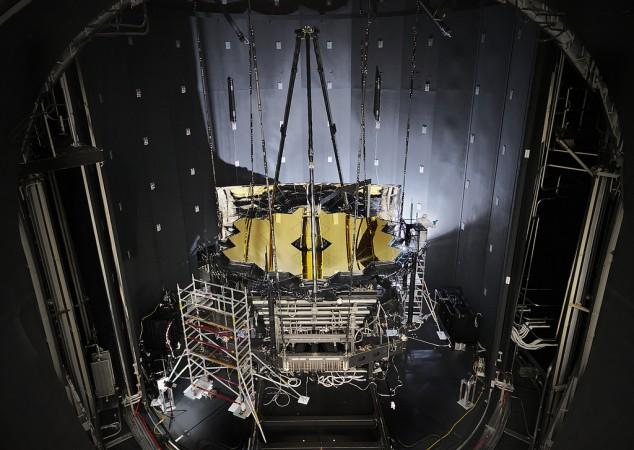The powerful James Webb Space Telescope (JWST) has recorded breathtaking new images of the iconic Ring Nebula, also known as Messier 57.
Ring Nebula is a planetary nebula -- objects that are the colourful remnants of dying stars that have thrown out much of their mass at the end of their lives.
It is a well-known object that is visible all summer long and is located in the constellation Lyra.
The images, released by an international team of astronomers from the UK, France, Canada, the US, Sweden, Spain, Brazil, Ireland and Belgium, showcase the nebula's intricate and ethereal beauty in unprecedented detail, providing a mesmerising view of the celestial wonder with a donut-like structure of glowing gas.
Approximately 2,600 lightyears away from Earth, the nebula was born from a dying star that expelled its outer layers into space.

What makes these nebulae truly breath-taking is their variety of shapes and patterns, that often include delicate, glowing rings, expanding bubbles or intricate, wispy clouds.
"We are amazed by the details in the images, better than we have ever seen before. We always knew planetary nebulae were pretty. What we see now is spectacular," said Albert Zijlstra, Professor in Astrophysics at the University of Manchester.
On August 4, 2022, JWST's NIRcam captured the main ring, surrounded by a faint halo and with many delicate structures.
The interior of the ring is filled with hot gas. The star which ejected all this material is visible at the very centre. It is extremely hot, with a temperature in excess of 100,000 degrees.
The nebula was ejected only about 4,000 years ago. The team also found several hundred linear features, pointing approximately at the central star. Their origin is not yet clear.
How a single star can create such a complex nebula is not well understood. In the background, thousands of more distant, numerous faint galaxies can also be seen, some with clear spiral structure.
Further, the image also shows that the ring consists of large numbers of small clumps -- as many as 20,000 clumps.
They contain molecular hydrogen and are much cooler and denser than the rest of the nebula. Some of the clumps are beginning to develop tails, behaving as comets the size of planets. About half of all gas in the nebula is in these clumps.

The brightest star here is the dying, extremely hot central star. It has used up all its fuel and is now cooling down. The star will become a white dwarf, an inert remnant of a star. The fainter stars in the image are not related.
"The James Webb Space Telescope has provided us with an extraordinary view of the Ring Nebula that we've never seen before. The high-resolution images not only showcase the intricate details of the nebula's expanding shell but also reveal the inner region around the central white dwarf in exquisite clarity," added Mike Barlow, the lead scientist of the JWST Ring Nebula Project.
"We are witnessing the final chapters of a star's life, a preview of the sun's distant future so to speak, and JWST's observations have opened a new window into understanding these awe-inspiring cosmic events. We can use the Ring Nebula as our laboratory to study how planetary nebulae form and evolve."
(With inputs from IANS)














